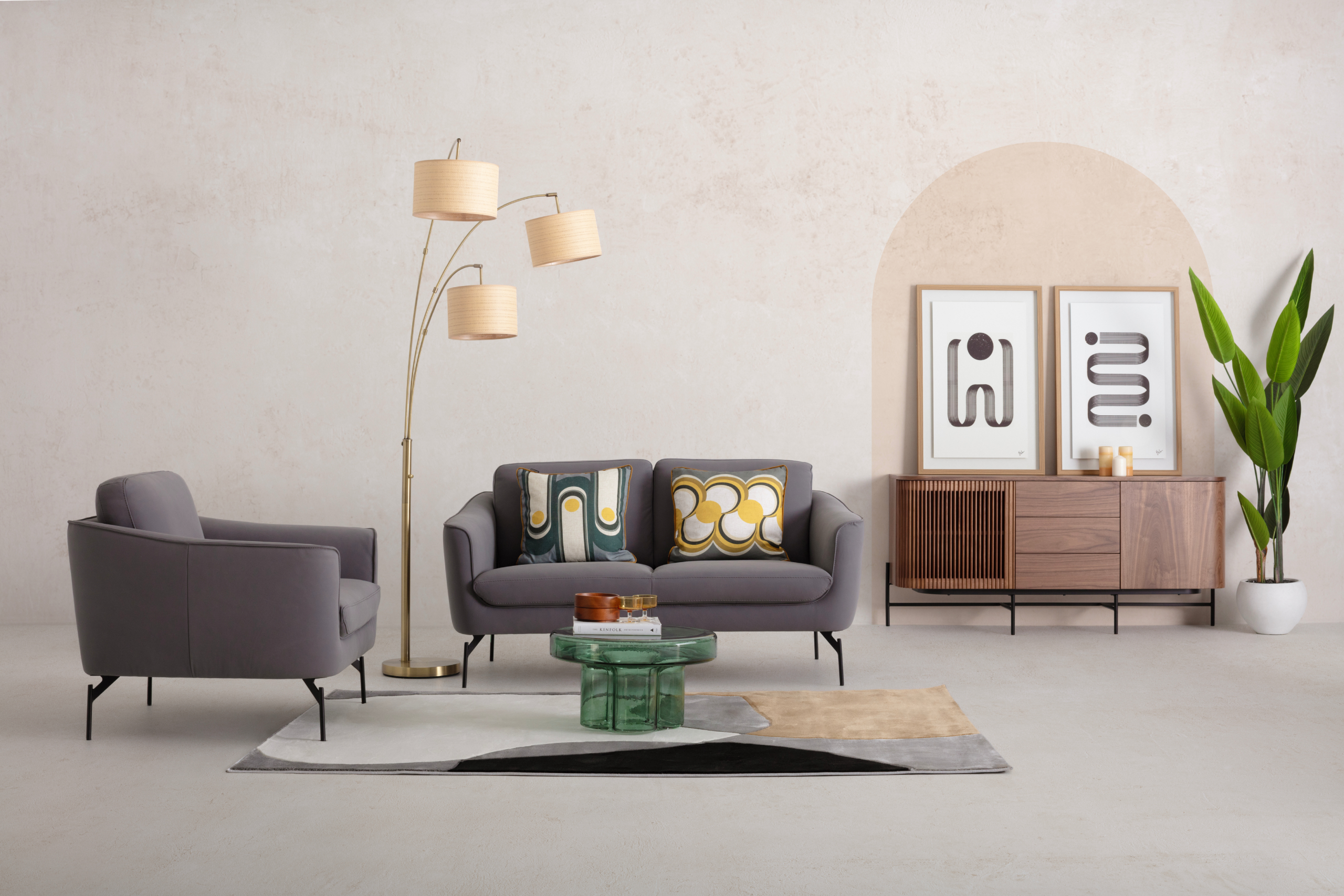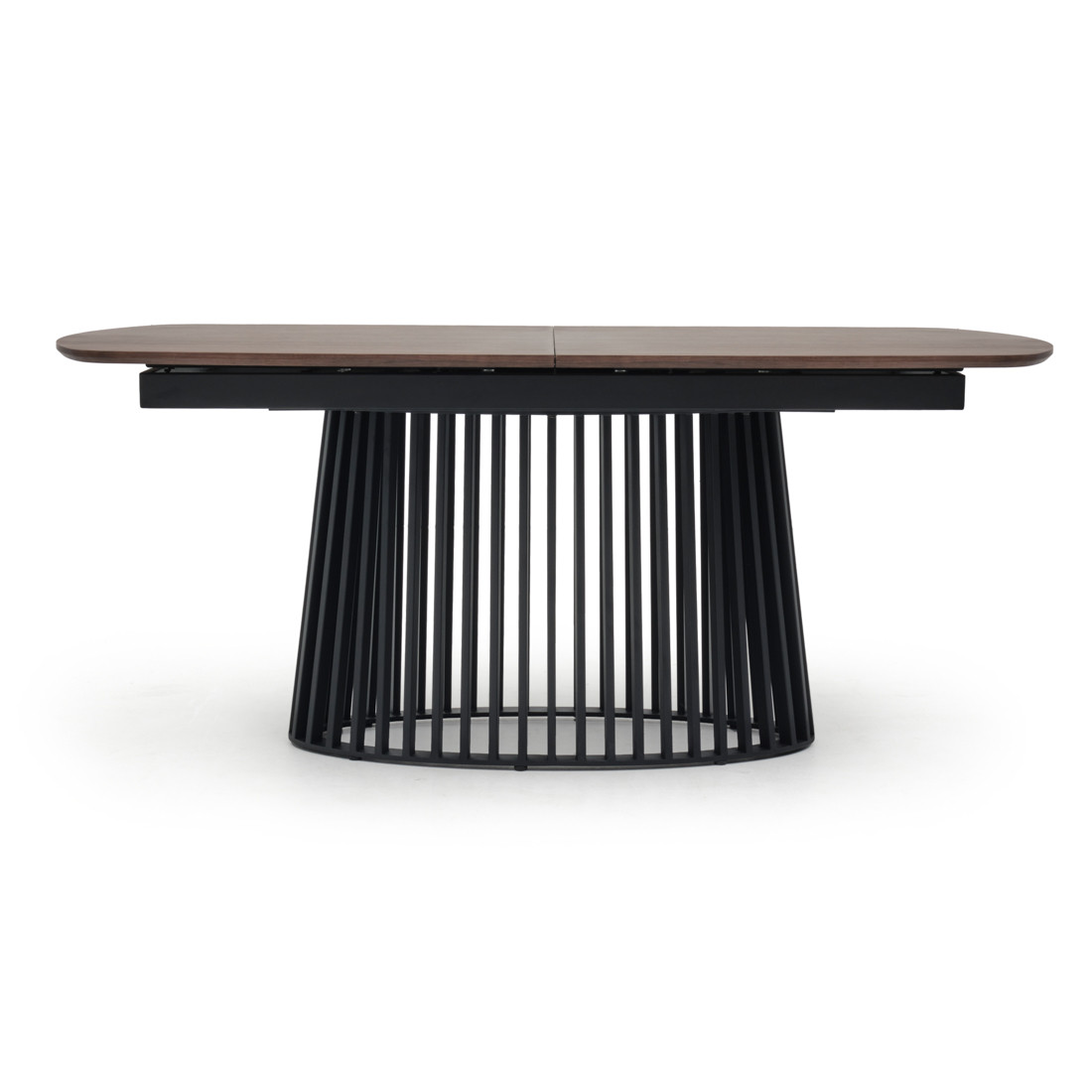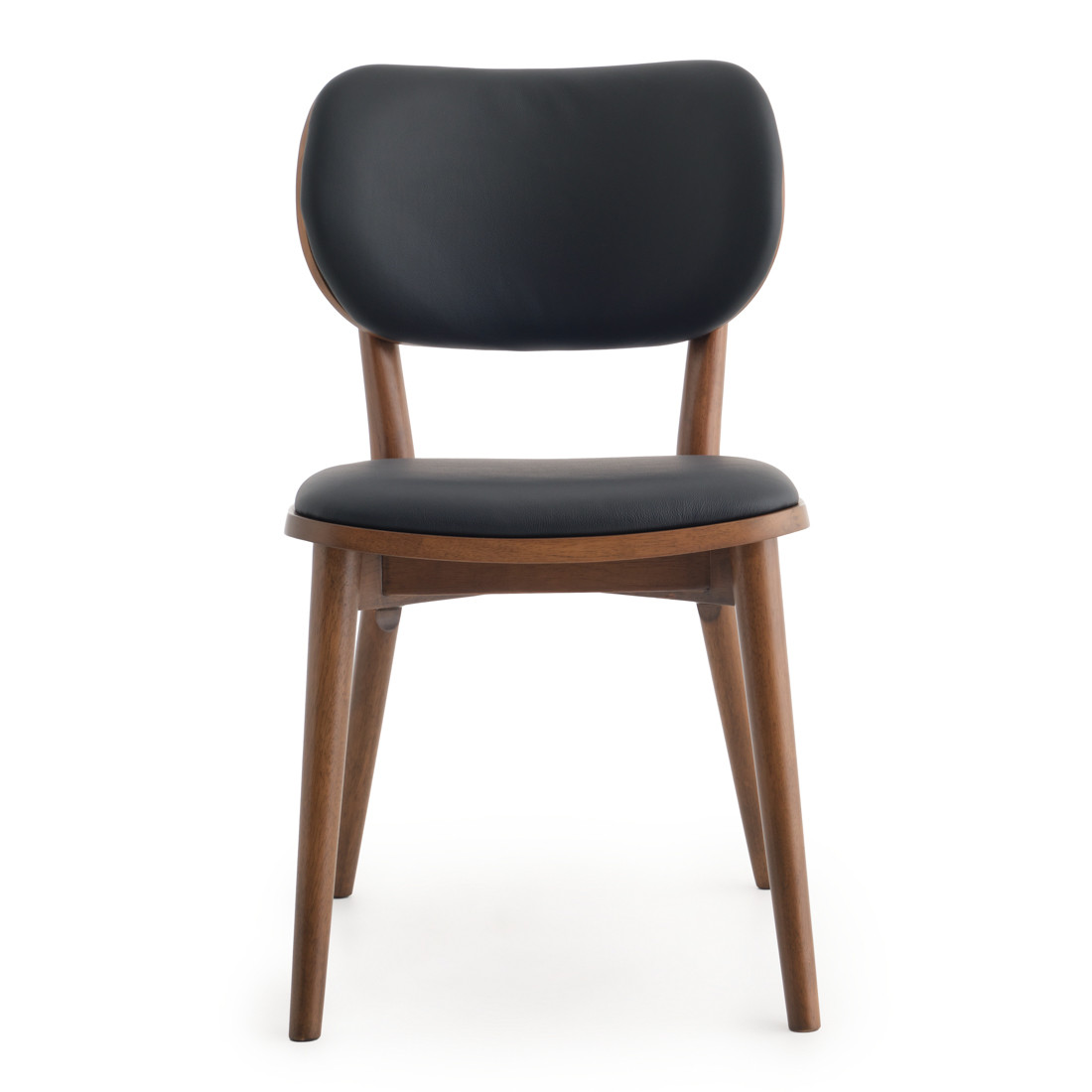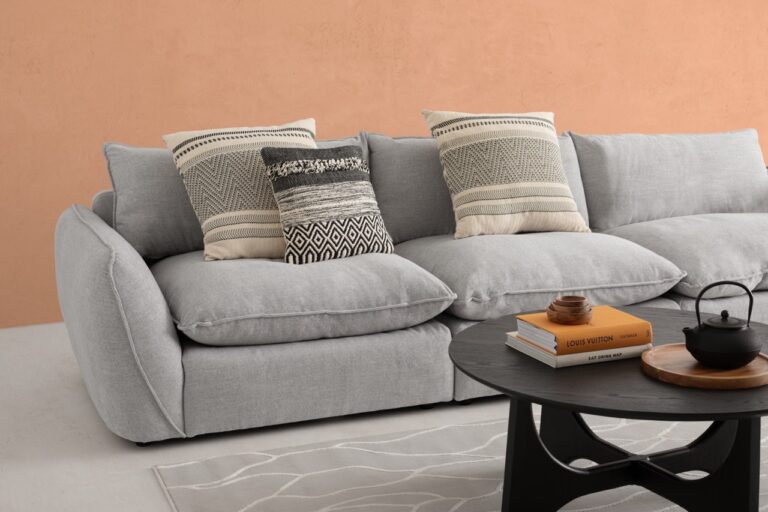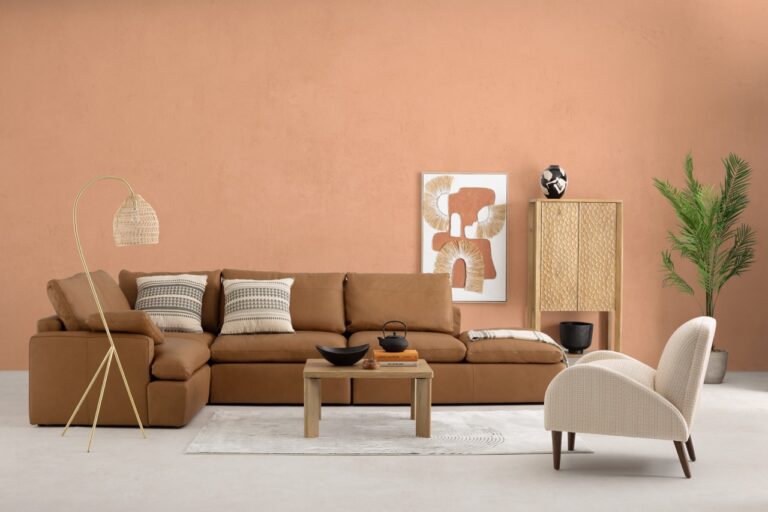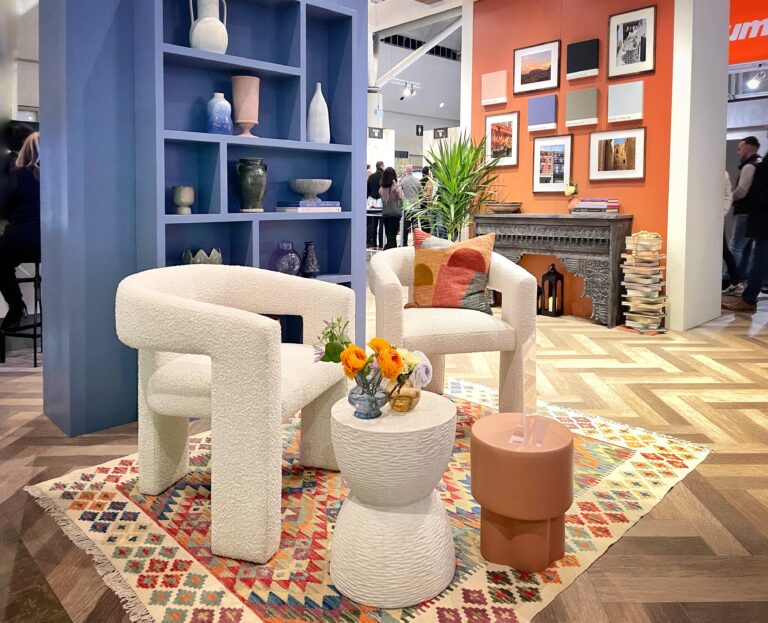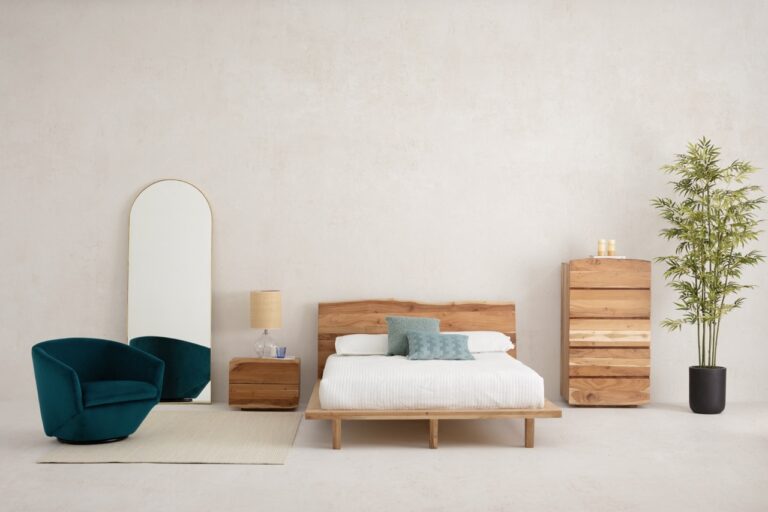Mid-century modern: what is it?
The mid-century modern style refers to the simple and functional furniture from the mid-20th century, which stylishly combines the nobility of wood with intriguing curves.
A brief history of mid-century modern
As the name suggests, the mid-century modern movement flourished in the middle of the last century, extending from the late 1930s to the 1960s. The post-war era marked a period of great economic growth with the construction of many homes and dwellings to meet demand. Scientific advancements and the first steps in the conquest of space directed aesthetics towards avant-garde materials and visionary shapes.
Renowned designers and architects created furniture that fully exploited the latest technologies and manufacturing methods while experimenting with innovative products. Teak, rosewood, and oak coexisted with metals, glass, and vinyl to achieve striking contrasts.
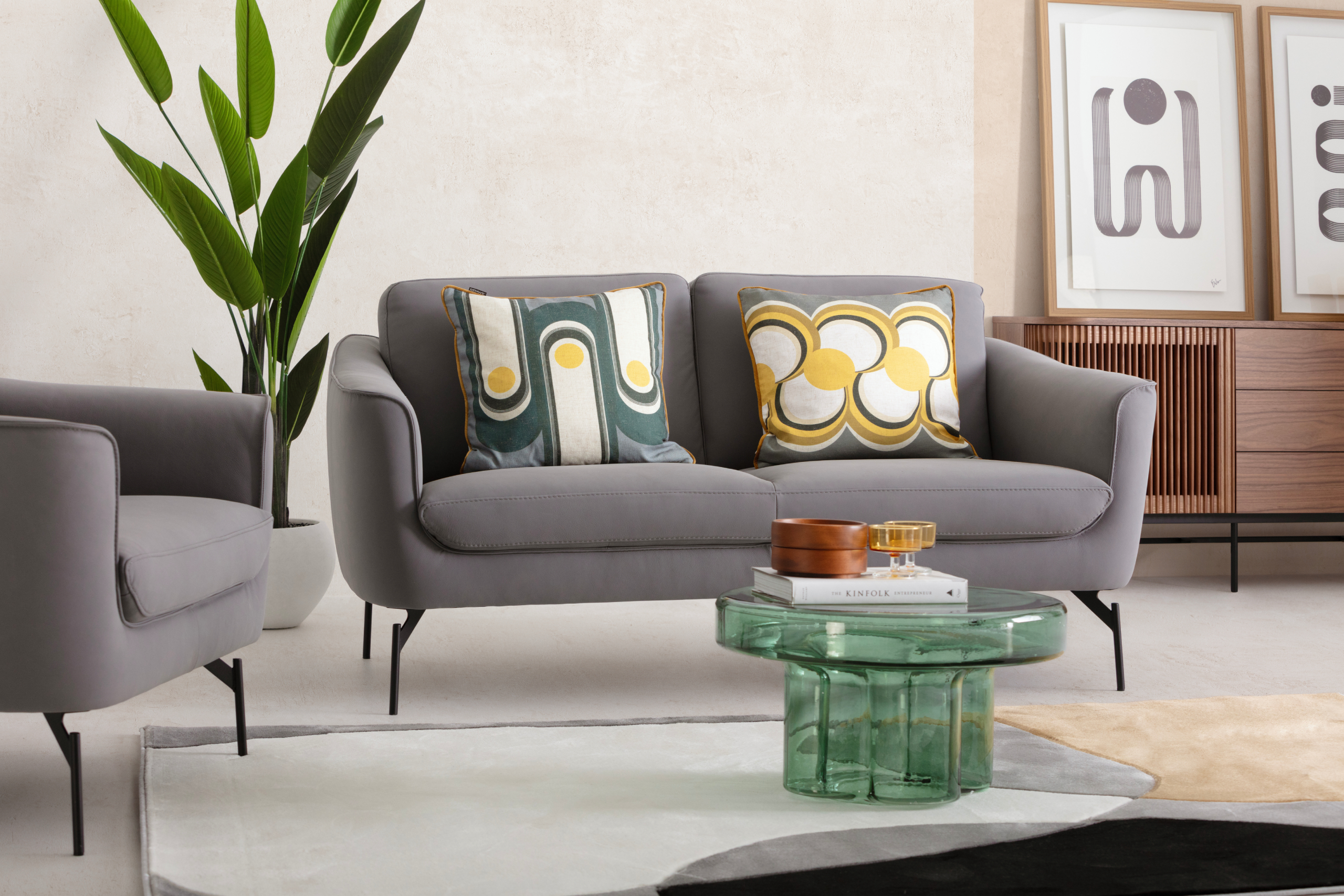
Form follows function
In contrast to the elaborate adornments of past design periods, mid-century modern furniture embraces a direct approach. It features sleek and sophisticated lines tailored to the demands of daily life: an armchair that is as comfortable as it is inviting, efficient storage solutions, and versatile furniture pieces. With a focus on achieving design excellence and efficient use of space, these pieces are often designed to be stackable or collapsible, embodying the principle that the form of an object should primarily relate to its intended function.
Key elements of mid-century modern
Material contrasts
Mid-century modern interiors delicately blend raw materials such as wood, steel, and even concrete with materials considered innovative for the time, like aluminum, glass, and laminate.
Return to simplicity
The mid-century modern aesthetic eschews the accumulation of collections and assorted accessories in favour of featuring a select few standout pieces — such as a verdant plant, an evocative sculpture, or a grand, sophisticated lighting fixture. This minimalist approach fosters a clutter-free space that is both functional and stylish, where each item is chosen for its role in the harmony of the whole.
Mix of neutral and bold colours
Striking colours — bright in the 1950s and more earthy in the 1960s — bring visual interest to spacious and minimalist rooms. Mustard yellow, navy blue, dark brown, teal, burnt orange, and olive green also create a dynamic contrast with white, black, and gray tones that remain very widespread.
Geometric shapes
The simple and timeless lines of mid-century modern furniture captivate with their exquisite geometry, which gives unique character to the decor. Pieces often feature organic curves that conform to the human silhouette. In terms of decor, abstract patterns are celebrated on rugs, fabrics, and wall art. The Elsi cushion and painting collection, as well as the Edrali canvas paintings, perfectly embody this design trend.
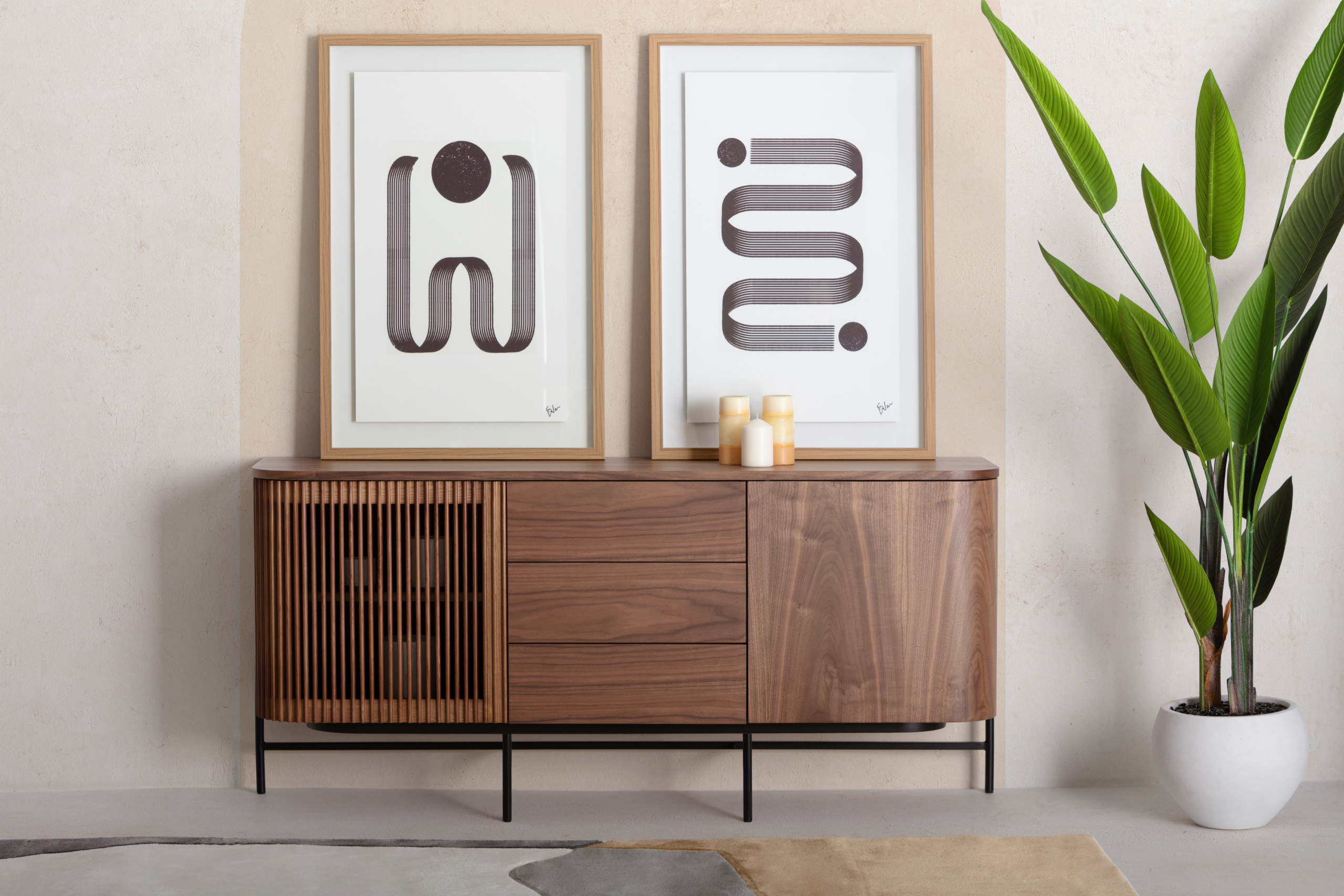
Letting the outside in
The mid-century modern style is well-suited to making the most of the natural elements already present in the decor — notably exposed beams, wood panels, and brick — to evoke the serenity and freedom of an outdoor space. The integration of lush plants also helps to reinforce this effect.
Ideas for mid-century modern decor
The mid-century modern ethos cherishes the creation of spaces designed for daily living, not for static exhibition like a museum. Select a handful of main pieces that will blend seamlessly with the contemporary aspects of your decor.
For a mid-century modern living room
Draped in premium quality soft leather, resting on a solid aluminum base cast under high pressure, and adorned with a light oak veneer, the luxurious Element armchair offers a respectful and modern nod to the most iconic armchair of the 20th century. Combine it with the matching leather ottoman that can serve both as a footrest and as an extra seat.
The extendable modular Emista sofa embodies the cherished versatility of mid-century modern. Its adjustable depth, timeless geometry, soft and durable fabric, and extended seating are suitable for evenings in front of the TV or socializing with guests.
For a mid-century modern kitchen
Designer Eero Saarinen once described the visual chaos of chairs tangled under the dining table as “an ugly, confusing, unrestful world.” The elegant Ellie extendable table brings order by replacing the traditional four legs with a central steel base finished in black thermoset that enhances its walnut veneer top. Pair it with comfortable Elinor leather chairs in matching colours and curves.
For a mid-century modern bedroom
Thin legs finished in black thermoset and a genuine tan leather upholstery make the European-style Esono large bed the focal point of any master bedroom. Its padded headboard adds comfort and warmth to this masterpiece with soothing and clean lines.
For a mid-century modern office
A large clear surface and a few drawers: that’s all it took to be productive in the era of typewriters, paper files, and rotary phones. The futuristic Stealth desk pays homage to the minimalism of the past while incorporating more storage to meet today’s needs. Its tempered glass, chrome accents, and glossy lacquered strips make it a workspace that is as functional as it is inspiring.
Mid-century modern style skillfully combines functionality and aesthetics, marrying characteristic geometric shapes with a rich variety of materials. Adopt it to live your everyday life in a timeless and harmonious setting that evokes both the past and the future.

